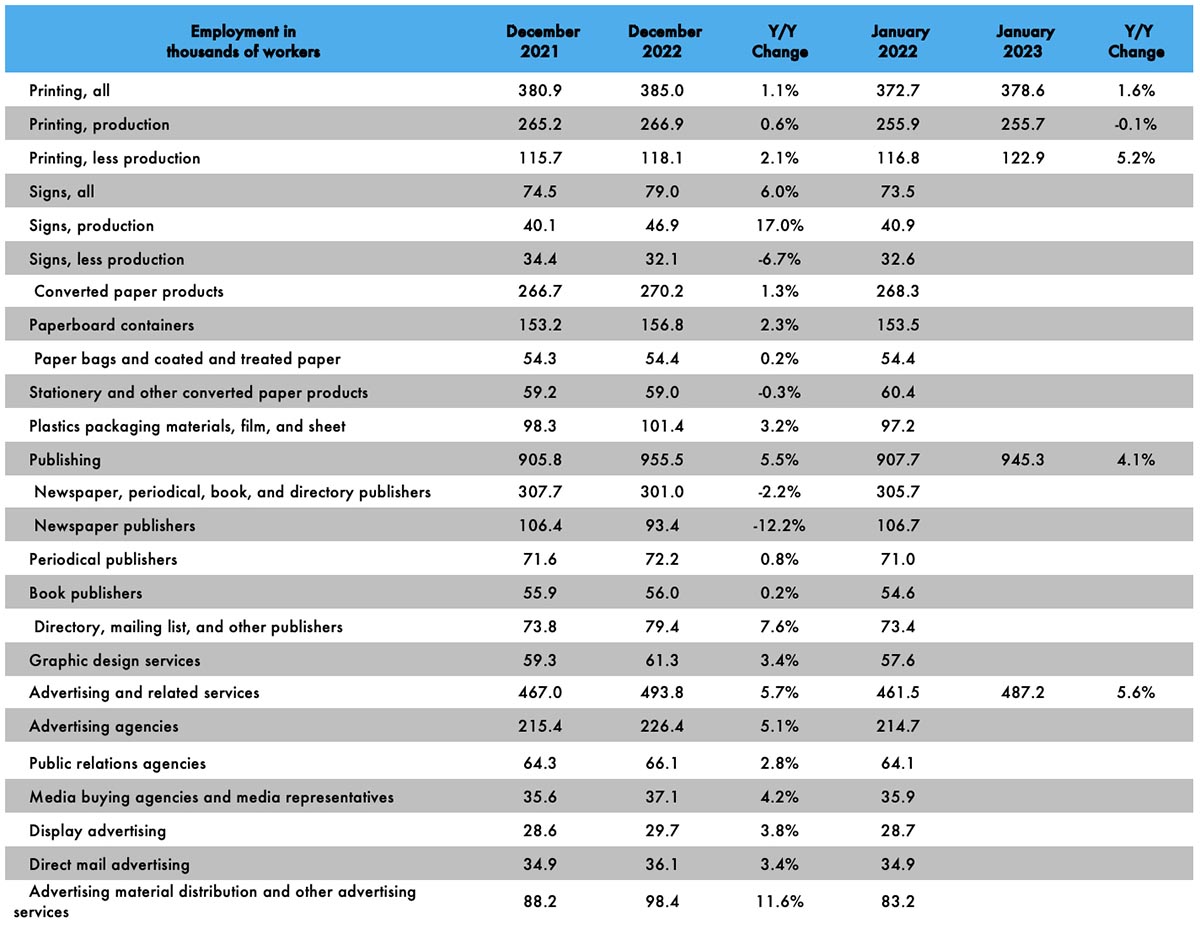
As summer turned to fall, printing employment started to drop, and by November had started to flatten, which continued through December and into the new year. Overall printing employment in January 2023 was down -1.7% from December, due entirely to a -4.2% drop in production employment, as non-production employment was up +4.1%. Year over year, employment in general was up +1.6%, while non-production employment was up +5.2% from January 2022 to January 2023.
Publishing in general had had a generally strong summer, but ebbed as the summer came to a close. Overall publishing employment was down -1.1% from December to January (See Figure 3.) Advertising and related services were down -1.3%.
You’ll notice that we added a number of other business categories to our employment table, which we will continue to track as we go forward. As you may recall from our tracking of the publishing and creative markets, the reporting of these segments lags a month.
For example, overall employment in the signage industry was down -1.1% from November to December, with sign production employment only down -0.6%.
Looking at some specific publishing and creative segments, from November to December 2022, periodical publishing employment was up +1.5%, while newspaper publishing employment was down -7.1%.Graphic design employment was up +6.2% from November to December 2022, and direct mail advertising employment was down -4.0% in November. PR agencies were up +10.0%.
As for January employment in general, the BLS reported on February 3 that total nonfarm payroll employment increased by 517,000 in January, and the unemployment rate hit a record low of 3.4%. Meanwhile, November employment was revised up by 34,000 and December employment was revised up by 37,000, for a total upward revision of 71,000.
The U-6 rate (the so-called “real” unemployment rate which includes not just those currently unemployed but also those who are underemployed, marginally attached to the workforce, and have given up looking for work) ticked up from 6.5% to 6.6%.
The labor force participation rate ticked up from 62.3% in December to 62.4% in January, and the employment-to-population ratio increased from 60.1% to 60.2%. The labor force participation rate for 24–54-year-olds also ticked up from 82.4% to 82.7%.
The February employment report comes out later this morning. Place your bets…














